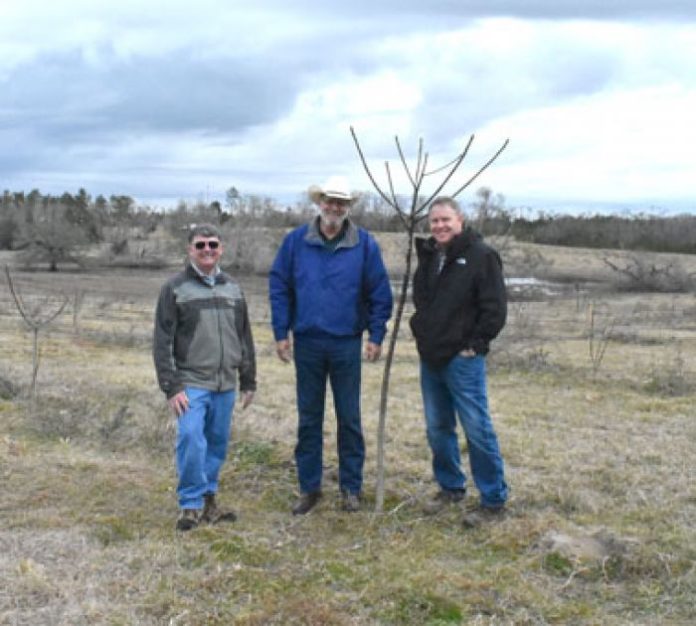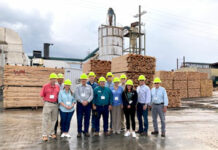Local entrepreneur Charles Reiff remains on the cutting edge of technology so it was no surprise when he opted to revitalize a successful ‘crop’ from the early 1900s. Reiff chose to go with an expert in Greg Frost of Gulf Coast Tung Oil out of Tallahassee.
The TIMES toured Charles Reiff’s 60-acre tung oil field last Friday to get a hands-on look at the operation. We talked with Pat Minogue, University of Florida professor of Forestry, “Back in the 1930s and around that time, there were 12,000 acres in this area. It was a band that was about 80 miles wide that goes across Florida and into Mississippi that was planted and some of the 12,000 acres in Mississippi but there was ever bit of 10,000 acres in Florida. The industry grew from just one little plant in the 30s, it’s easy to grow, it’s not prone to diseases, it doesn’t require a lot of nutrition and it’s not really invasive. If you go from Jackson to Gadsden and other counties you will see tung oil trees. Just recently, they have said they have some concern but what we are doing is best management practices. Tung oil is a fast-producing crop, unlike pine trees that take 15 to 20 years for the crop to mature to harvest. Tung oil trees will have nuts on them within two full years of maturity, not enough to gather for crops but by age four to five years, they are producing well enough for harvest.”
Minogue and his staff were here last Friday getting the ground ready for a new crop of tung trees that are scheduled to be planted in March. Tung trees have a beautiful bloom in the spring and they are harvested in the fall. The tung tree produces a nut and from that nut, seeds are pressed into what becomes tung oil. Frost says, “Tung oil has been used literally for thousands of years as a wood finish and that’s one of the primary uses still today.”
Greg Frost talked about the tung-oil production in years past, “This area back in the twenties and thirties had tens of thousands of acres of tung trees. It was a very large industry all along the gulf coast pretty much from Mississippi to Gainesville.”
Reiff, Frost along with the University of Florida and the Florida Department of Agriculture have high hopes of bringing the crop back to this area. They are especially excited about this venture in light of the devastation left by Hurricane Michael with all the pine trees that were destroyed. They feel like although they have some trees that are close to two years old, the timing for the project is perfect.
Minogue said, “Since the hurricane we’re looking for alternates. Crops that grow quickly, that are high value and tung is one of those.”
Frost said lots of people in north Florida and the panhandle are at a loss for what to do with their acreage, “A lot of folks are trying to figure out, what do I do with my farm, how do I go from here, how do I optimize the income that I can have from my farm, and tung oil offers that.”
Frost says, “Tung oil has been used literally for thousands of years as a wood finish and that’s one of the primary uses still today.”
Frost says it is also used in a variety of electronics including batteries which leads them to think the demand for tung oil is only going to grow.
“Overall we’re trying to support this as a new business opportunity for the cities in the county,” says Pat Minogue of University of Florida.
It is the hope of everyone that this venture will recruit growers in Jackson County because much of the soil in the area is perfect for this crop.
Minoque says, “A soil that has a sandy surface and a clay layer below that, that would have a good moisture holding capacity and nutrient holding capacity.”
Reiff said, “We probably have 40 good acres in this field.” Frost said the initial research into bringing back tung oil began about seven or eight years ago and that he and Charles (Reiff) began pursuing the idea of bringing it back to the area.




